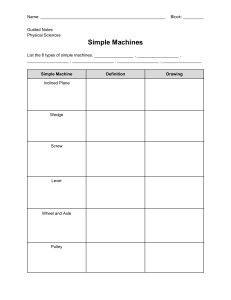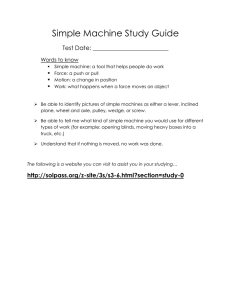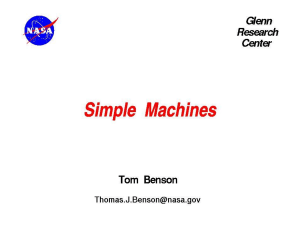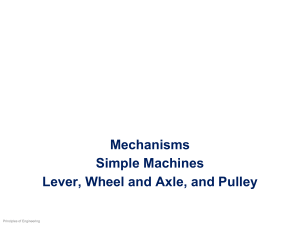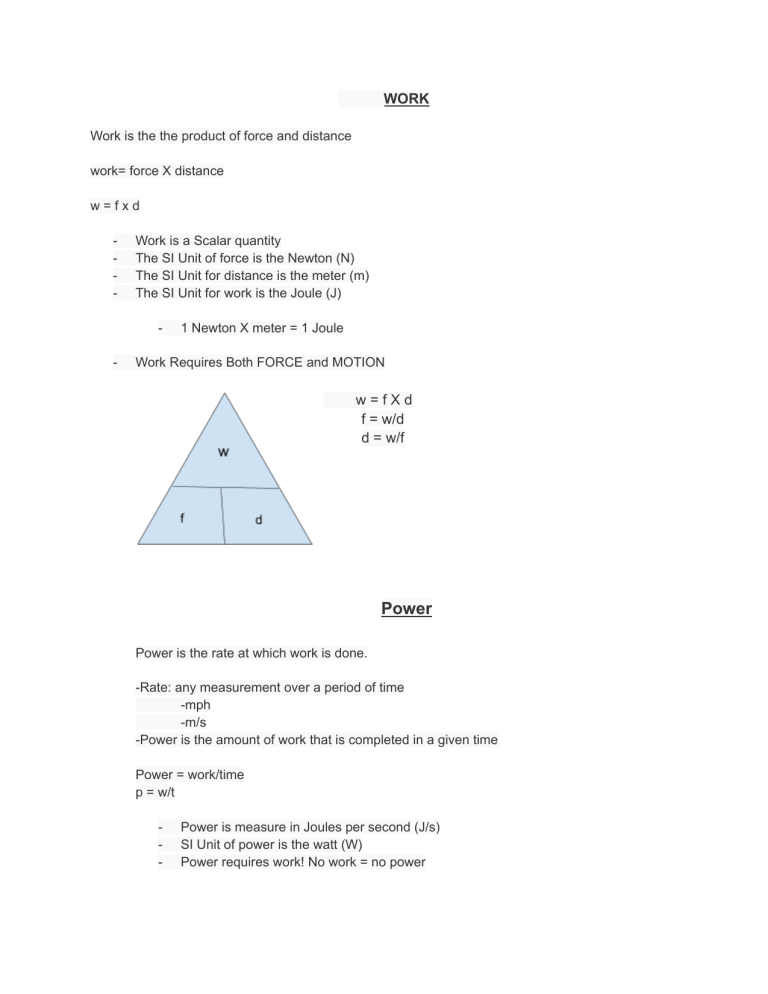
WORK Work is the the product of force and distance work= force X distance w=fxd - Work is a Scalar quantity The SI Unit of force is the Newton (N) The SI Unit for distance is the meter (m) The SI Unit for work is the Joule (J) - - 1 Newton X meter = 1 Joule Work Requires Both FORCE and MOTION w=fXd f = w/d d = w/f Power Power is the rate at which work is done. -Rate: any measurement over a period of time -mph -m/s -Power is the amount of work that is completed in a given time Power = work/time p = w/t - Power is measure in Joules per second (J/s) SI Unit of power is the watt (W) Power requires work! No work = no power Simple Machines Simple Machines: the simplest, least complex devices that use leverage to do work by multiplying a force. There are 6 simple machines - Lever Inclined Plane Wheel and axle - wedge - screw - pulley There are two basic parts to a simple machine 1. Input Force: Often referred to as the Effort 2. Output Force: Often referred to as the Load Kinetic Energy The Energy of Motion!! There are 2 factors that determine kinetic energy: Speed and Mass Potential Energy Potential energy: a type of energy that has the ability to be used to do some work, but it is being stored for later Types of Potential Energy: Elastic - think springs Chemical - chemical processes, food, etc. Nuclear - I think we are all aware of this potential energy source Electric - protons and electrons in an electrical field Gravitational ( Most Commonly Considered) Work ● ● or Unit: Joule (J) = 1N x m = 1kg x m2/s2 Power ● ● Unit: Joules/second or J/s = Watts (W) Mechanical advantage ● ● ● ● Input: Efficiency ○ ○ Ideal mechanical advantage of machines Lever Pulley Wheel and axle Wedge Incline plane Screw Total IMA of a compound machine ● Find the total IMA of each machine, then multiply ○ Example: What is the mechanical advantage of a compound machine composed of an inclined plane that has a 6 m ramp with a height of 1 m and a movable pulley with two supporting rope sections? ■ ■ ■ ■ ■ Kinetic energy ● Potential energy ● ● Mechanical Energy ● ● or when dealing with springs
